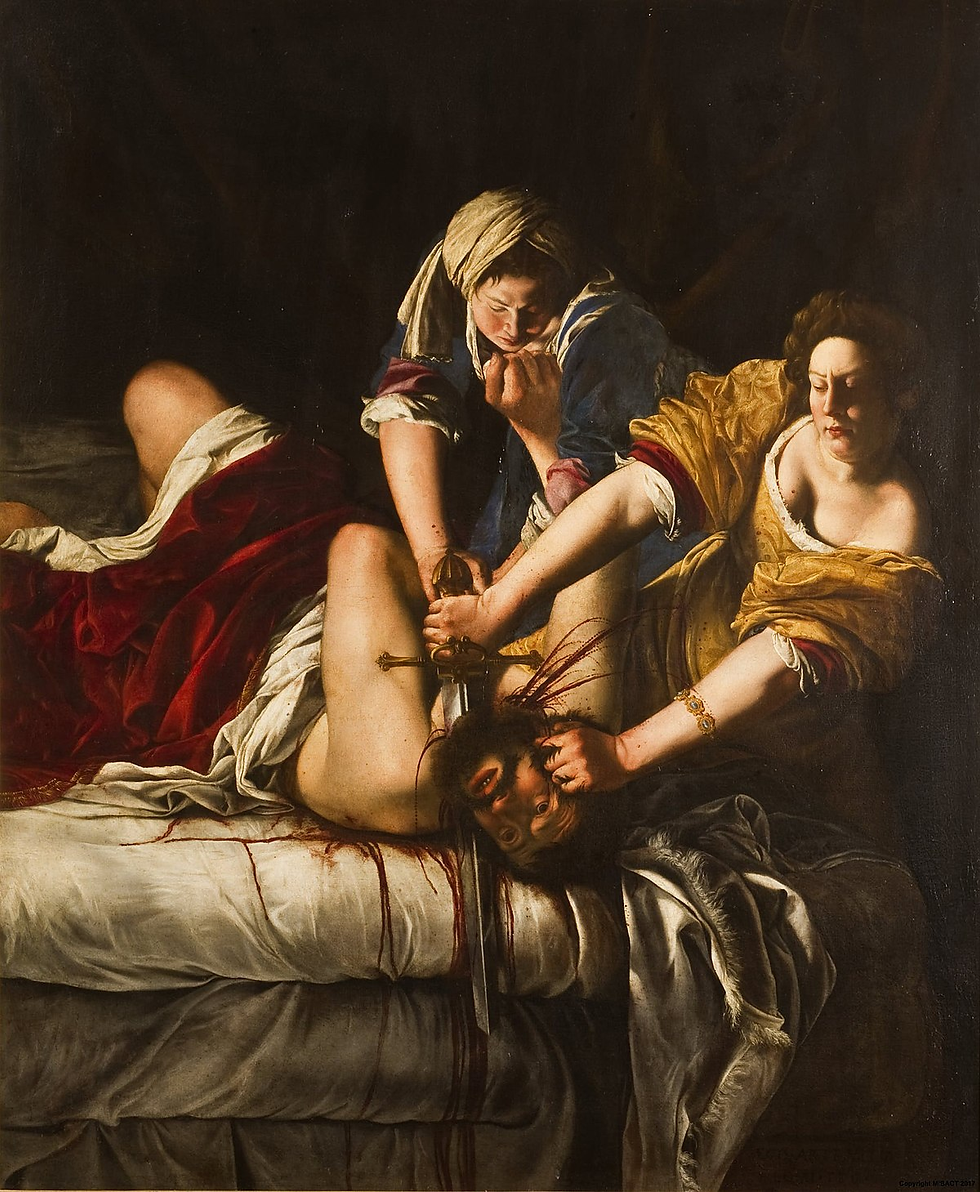The Timeless Art of Artemisia Gentileschi: A Closer Look at 'Judith Beheading Holofernes'
- bbugrahanyildirim
- 22 Ara 2023
- 2 dakikada okunur
In the world of art, few pieces resonate with the power and intensity of Artemisia Gentileschi's "Judith Beheading Holofernes." This masterpiece, a testament to Gentileschi's prowess, emerges from the rich tapestry of Baroque art, a period marked by dramatic expression and bold, intricate details.
Artemisia Gentileschi, born in 1593 in Rome, was a groundbreaking figure in an era dominated by male artists. She challenged the norms of her time, not just as a female artist but also through her vivid and often visceral portrayal of female figures. "Judith Beheading Holofernes," painted around 1620, stands as a crowning achievement in her career. The painting depicts the biblical story of Judith, a widow from the city of Bethulia, who seduces and subsequently decapitates the Assyrian general Holofernes to save her city and people.
The painting is striking for its raw emotion and dramatic use of chiaroscuro, a technique that plays with stark light and shadow contrasts, typical of the Baroque period. Gentileschi's Judith is a portrayal of strength and determination, characteristics that echo the artist's personal struggles and triumphs.
Exploring this painting is akin to delving into a pivotal moment in art history, where the Baroque style's drama and energy meet a rare narrative perspective. Gentileschi's work is not just a visual spectacle; it's a bold statement on the capabilities and resilience of women in a time when their roles were significantly underestimated.
For those captivated by the depth and history of this artwork, owning a piece inspired by Gentileschi's "Judith Beheading Holofernes" offers a unique opportunity to connect with history. Discover this timeless piece of art here and let the power of Baroque art transform your space.
In embracing this historical artwork, you're not just acquiring a piece of art; you're embracing a story of resilience, creativity, and the enduring power of expression.





Yorumlar